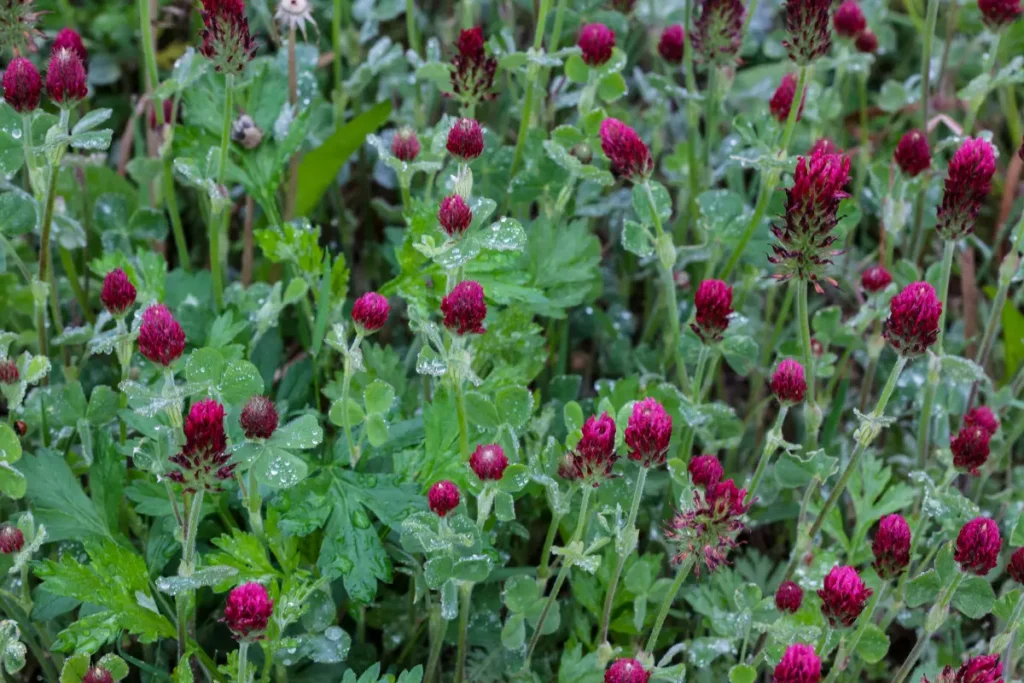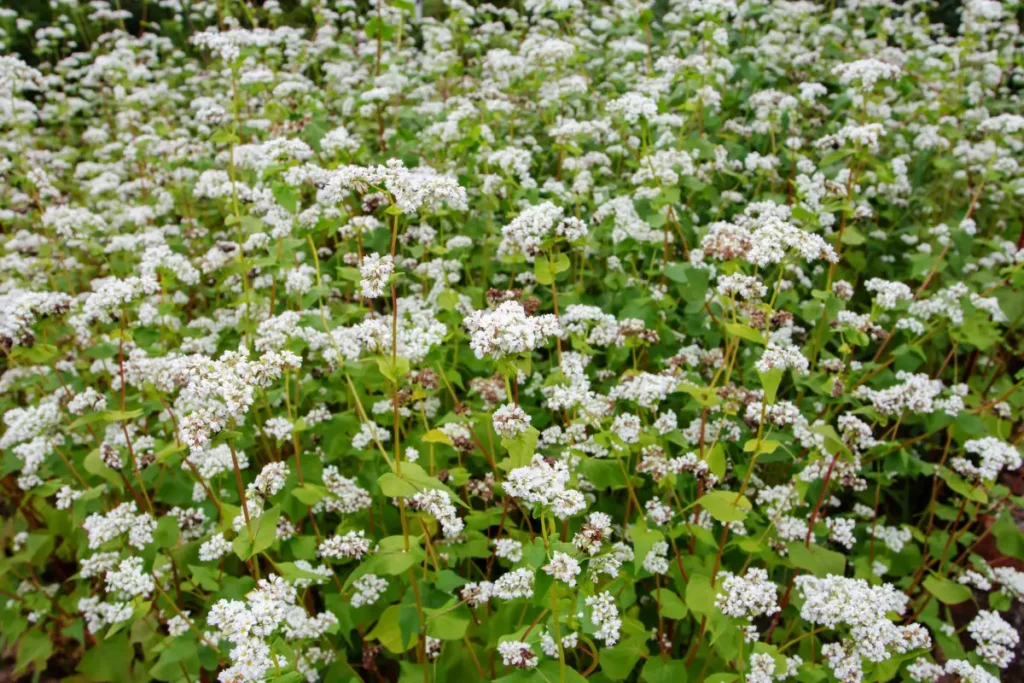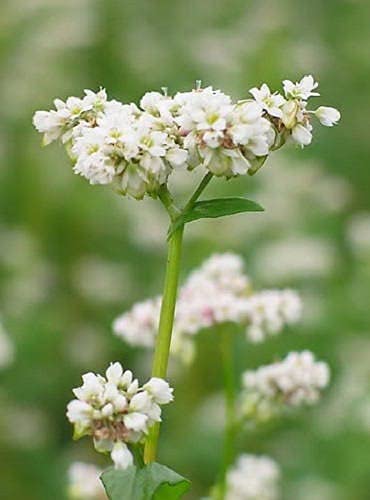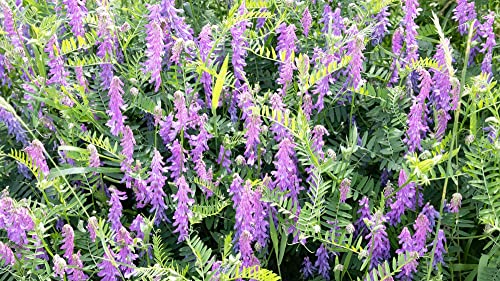Imagine transforming your garden into a lush oasis of vibrant greens and flourishing blooms, all with less effort and time. If you’re a working professional with a passion for gardening, this dream can become a reality, thanks to the gardening world’s best-kept secret: cover crops. These unassuming plants are the ultimate garden hack, revolutionizing the way we nurture our raised beds and making it possible for busy individuals to enjoy bountiful harvests without the usual toil and trouble. In this article, we’ll delve into the captivating world of cover crops, exploring how they work their magic, why experts swear by them, and how you can harness their power to turn your raised bed into a flourishing haven of greenery and productivity. Get ready to unlock the secrets of cover crops and discover how they can redefine your gardening experience.

What Are Cover Crops?
Cover crops, often known as “green manure,” play a vital role in gardening. They act as nature’s soil caretakers, guarding against erosion and improving soil health. Moreover, these plants help manage weeds by outcompeting them for resources, reducing your workload. What’s more, many cover crops can fix atmospheric nitrogen into the soil, boosting nutrient availability for your garden plants. This natural fertilizer boost leads to healthier crops and higher yields.
The Pros’ Perspective
Now that we’ve uncovered the basics of cover crops, let’s dive into what experts in the gardening world have to say about them. These seasoned gardeners, who have witnessed firsthand the remarkable transformation that cover crops bring to their raised beds, sing their praises with enthusiasm and conviction.
For many of these gardening aficionados, cover crops have become nothing short of a revelation. They’ve experienced how these unassuming plants can turn even the busiest professionals into flourishing gardeners. These seasoned individuals, who once struggled to balance work and gardening, now find that cover crops make it not only manageable but also immensely rewarding. Their stories serve as a testament to the game-changing potential of cover crops.

The Ultimate Garden Hack: How Cover Crops Work
To truly appreciate the magic of cover crops, it’s essential to understand the science behind their effectiveness. These unassuming plants have a remarkable ability to improve soil health and elevate your gardening game. Let’s explore how they accomplish this feat.
At the heart of cover crop benefits is their role in preventing soil erosion. During heavy rains or windy weather, they act as a protective shield, safeguarding your precious topsoil. This ensures that essential nutrients remain in place, ready to nourish your plants. In addition, cover crops are champions of weed management. By competing vigorously for resources, they thwart the growth of unwanted plants. This not only reduces your laborious weeding efforts but also ensures that your garden plants have less competition for sunlight, water, and nutrients. Moreover, some cover crops possess a unique superpower – nitrogen fixation. They take atmospheric nitrogen and convert it into a form that plants can readily absorb, essentially providing a natural fertilizer boost to your garden. This boost leads to healthier, more vigorous crops, resulting in higher yields.
The Best Cover Crops for Working Professionals
Now that you understand the science behind cover crops, let’s explore the practical side of using them in your raised bed garden. As a busy professional, you’ll want to choose cover crops that offer maximum benefits with minimal effort. Here are some of the top cover crops recommended for those with demanding schedules:
1. Winter Rye (Secale cereale):
This hardy cover crop is a favorite among professionals due to its resilience and ability to suppress weeds. Plant it in the fall, and it will grow throughout the winter, protecting your soil from erosion.

- Winter Cereal Rye - 1 LB ~8,000 Seeds - Secale cereale
- Superior Germination Rates - Non-GMO - Open Pollinated
- Grain & Cover Crop Seeds
- 75 Days to Full Maturity - Annual Crop - Not Intended to Over-winter - All Zones in the U.S.A
- Sustainable Seed Company - Family Owned & Operated - Premium Quality - Ethical & Sustainable Se
2. Crimson Clover (Trifolium incarnatum):
Known for its vibrant red blooms, crimson clover is an excellent choice for fixing nitrogen in your soil. It’s easy to establish and adds a burst of color to your garden.

- Quality Crimson Clover seeds packaged by Seed Needs. Intended for the current and the following growing season. Packets are 3.25 wide by 4.50 tall and come with a full colored illustration on the front side, as well as detailed sowing instructions on the reverse.
- Crimson Clover is a beautiful flowering legume that produces crimson red florets. The flower heads are roughly 1 to 2.5 inches in length and a good 3/4 inch to an inch wide. The foliage is green and appealing to the eye, measuring 24 to 36 inches tall.
- Crimson Clover flowers are known to produce an abundance of nectar, attracting all sorts of beneficial insects to the garden. You will find that honeybees, bumblebees, butterflies & hummingbirds will cling to these beauties.
- Crimson Clover is categorized as an annual cover crop. Annuals will establish themselves from seed, growing quickly and blooming profusely through the warm months of Summer.
- All Clover seeds sold by Seed Needs are Non-GMO based seed products and are intended for the current & the following growing season. All seeds are produced from open pollinated plants, stored in a temperature controlled facility and constantly moved out due to populari
3. Buckwheat (Fagopyrum esculentum):
If you have a short window of time between crops, buckwheat is your go-to cover crop. It grows quickly, suppresses weeds, and attracts beneficial pollinators with its abundant flowers.

- 200 Seeds
- Materials Seeds, Ziplock Poly Bag, Labeled With, Color Photo, Plant Stats, Planting Instructions, And Love
- NAME: Buckwheat SCIENTIFIC NAME: Fagopyrum Esculentum COLOR: White PLANT SEEDS: Outdoors after frost / Indoors weeks before last frost PLANT HEIGHT: 6 - 9 PLANT SPACING: 12 - 18 HARDINESS ZONE: N/A
- HARVEST: 80 Days LIGHT REQUIREMENTS: Sun - Part Shade SOIL & WATER PREFERENCES: Average QUANTITY: 200 Se
4. Hairy Vetch (Vicia villosa):
This legume cover crop is a nitrogen-fixing powerhouse. It’s perfect for improving soil fertility and can be sown in the late summer or early fall.

- GROW HAIRY VETCH: Vicia villosa, known as the hairy vetch, fodder vetch or winter vetch, is a plant native to some of Europe and western Asia. It is a legume, grown as a forage crop, fodder crop, cover crop, and green manure.
- EASY TO GROW: Sew any time of year and loosely cover with soil, water as needed. Having a grass and weed free seedbed is very helpful
- ALL NATURAL: 100% Open Pollinated, 100% Non-GMO, 100% Non-Hybrid, 100% Heirloom
- CZ GRAIN GUARANTEE: As with all our products, we guarantee your success! Reach out with questions or concerns for a simple and fast soluti
5. Dutch White Clover (Trifolium repens):
A low-growing cover crop, Dutch white clover is excellent for ground cover. It not only adds nitrogen to the soil but also acts as a living mulch, reducing the need for additional mulching.
In the busy world of working professionals, these cover crops offer a winning combination of low maintenance and high rewards, ensuring that your raised bed garden thrives even when time is at a premium.

- White Dutch Clover Seed 1 Lb Seeds Trifolium Repens Seeds White Clover S
Tips for Incorporating Cover Crops into Your Garden
Now that you know which cover crops to choose, let’s dive into the practical steps for successfully integrating them into your raised bed garden. With the right approach, you can harness the full potential of these green allies without adding extra stress to your already busy life.
1. Timing Is Key:
Plan your cover crop planting carefully. In most cases, it’s best to sow them in the late summer or early fall after your primary crop has been harvested. This timing allows cover crops to establish themselves before winter.
2. Proper Spacing:
Depending on the cover crop you choose, follow recommended spacing guidelines. Adequate spacing ensures they can grow without competing too much for resources.
3. Seed Depth:
Pay attention to the recommended planting depth for your chosen cover crop. Proper depth ensures good germination and growth.
4. Maintenance Made Easy:
One of the beauties of cover crops is their low maintenance nature. Keep an eye on their growth, and if they become too tall or close to flowering, mow or cut them down before they go to seed.
5. When to Incorporate:
When it’s time to plant your main crops again, you can either cut the cover crops and leave them on the soil surface as a mulch or incorporate them into the soil by turning them under. The choice depends on your preference and the specific needs of your garden.
6. Rotate Your Crops:
To prevent soil-borne diseases and pests, rotate your main crops each season and adjust your cover crop selection accordingly.
By following these practical tips, you can seamlessly integrate cover crops into your gardening routine, ensuring that your raised bed garden reaps the rewards while you continue to excel in your professional life. These low-maintenance additions will work tirelessly to improve your soil, suppress weeds, and boost your garden’s productivity.
Common Myths and Misconceptions
Now that you’re well on your way to becoming a cover crop expert, it’s crucial to address some common myths and misconceptions that might still be lingering in your mind or those of fellow working professionals. Let’s set the record straight and dispel any doubts you may have:
Myth 1: Cover Crops Are High-Maintenance
Contrary to this belief, cover crops are known for their low-maintenance nature. Once you’ve sown them, they do most of the work for you, requiring minimal attention.
Myth 2: Cover Crops Are Only for Large Farms
Cover crops are equally beneficial for small-scale gardens, including raised beds. They’re scalable to fit your space, whether you have a small urban garden or a larger plot.
Myth 3: Cover Crops Are Expensive
Cover crop seeds are cost-effective, especially considering the numerous benefits they bring. Plus, they can reduce the need for expensive soil amendments and pest control measures.
Myth 4: Cover Crops Are Complicated to Incorporate
Incorporating cover crops into your gardening routine can be as simple as sowing the seeds after your main crop is harvested. It doesn’t require advanced gardening knowledge.
Myth 5: Cover Crops Compete with Main Crops for Nutrients
Cover crops can actually improve nutrient availability for your main crops by fixing nitrogen in the soil, making it more accessible to other plants.
Myth 6: Cover Crops Don’t Yield Any Benefits
This couldn’t be further from the truth. Cover crops improve soil health, reduce erosion, suppress weeds, and boost overall garden productivity.
By dispelling these myths and misconceptions, you can approach cover crops with confidence and fully embrace them as the ultimate garden hack for busy professionals. With the right knowledge and approach, you’ll be well on your way to a thriving raised bed garden that complements your fast-paced lifestyle.
Tips from the Experts
Gaining insights from gardening experts is invaluable when it comes to maximizing the benefits of cover crops. These seasoned individuals have honed their knowledge and skills over years of dedicated gardening. Here are some expert tips to help you make the most of cover crops in your raised bed garden:
1. Diversify Your Cover Crop Selection:
Professional gardeners often recommend planting a mix of cover crops to reap various benefits. Combining nitrogen-fixing legumes with weed-suppressing grains, for instance, can enhance soil health and productivity.
2. Experiment with Crop Rotations:
Rotate your cover crops strategically with your main crops to break disease cycles and improve soil structure. Experts advise experimenting with different combinations to find what works best for your specific garden.
3. Observe Your Garden’s Needs:
Pay close attention to your garden’s unique requirements. Experts emphasize the importance of adapting your cover crop choices based on factors like soil type, climate, and the previous season’s crops.
4. Timing Is Everything:
Timing your cover crop planting correctly is crucial. Consult local gardening experts or cooperative extension services for guidance on the best planting times in your region.
5. Monitor Soil Health:
Regularly test your soil to gauge nutrient levels and pH. Experts stress that understanding your soil’s condition allows you to tailor your cover crop selection to address specific deficiencies.
Aanbevolen grondtestkits
| Afbeelding | Titel | Primeur | Kopen |
|---|---|---|---|
 | MySoil - Bodemtestkit | Kweek het beste gazon en de tuin | Volledige en nauwkeurige nutriënten- en pH-analyse met aanbevelingen op maat van uw bodem- en plantbehoeften | PrimeurIn aanmerking komend | Controleer mijn prijs op Amazon |
Bovenkant | Lustre Leaf 1601 Rapitest-testkit voor bodem-pH, stikstof, fosfor en kalium, 1 pak | Primeur | Controleer mijn prijs op Amazon |
 | Bodemtestkit -140 Test- Testen PH Ammoniak Stikstof Fosfor en Kalium - Tester voor uw moestuin, gazon en bodem | PrimeurIn aanmerking komend | Controleer mijn prijs op Amazon |
 | Whitetail Institute Laboratory Soil Test Kit, zorgt voor het meest succesvolle hertenvoedselplot mogelijk, inclusief professioneel advies, ontvang resultaten binnen één week | PrimeurIn aanmerking komend | Controleer mijn prijs op Amazon |
 | Lamotte Model El - Testkit voor gras en tuingrond - 5679-01 | PrimeurIn aanmerking komend | Controleer mijn prijs op Amazon |
 | Garden Tutor Bodem pH-testkit (bereik 3,5-9) | 100 pH-teststrips voor grond | PrimeurIn aanmerking komend | Controleer mijn prijs op Amazon |
 | Bodem pH-papiertestkit – 100 teststrips (3,5-9 bereik) – Gebruik voor het testen van tuin, huis, gazon, gras, groentetuin, vuil, tuin, compost, buiten- en kamerplanten | PrimeurIn aanmerking komend | Controleer mijn prijs op Amazon |
6. Don’t Fear Failure:
Even experts acknowledge that not every gardening season will yield perfect results. Sometimes, cover crops may not perform as expected, but these experiences offer valuable lessons for improvement.
By heeding the advice of experienced gardeners, you can fine-tune your approach to cover crops and elevate your gardening skills. Their wisdom will empower you to make informed choices and adapt to the unique challenges and opportunities your raised bed garden presents. With their guidance, you’ll be well on your way to gardening success.
Final Thoughts on Cover Crops for Raised Beds
Cover crops are not just a gardening trend but a game-changing strategy that empowers busy professionals to cultivate thriving raised bed gardens. From protecting soil and minimizing weed struggles to enhancing nutrient availability, cover crops offer a wealth of benefits that can elevate your gardening experience.
Whether you’re a lawyer, software developer, or marketing executive, the world of cover crops is within your reach and brings tangible rewards. Embrace cover crops as the ultimate garden hack, armed with the knowledge, tips, and inspiration shared by gardening experts. With their guidance and your enthusiasm, you can create a garden oasis that flourishes alongside your demanding professional life. So, get ready to unlock the full potential of your raised bed garden and enjoy the abundant rewards it has to offer. Happy gardening!

Darrell heeft een passie voor tuinieren die hij van zijn vader heeft geërfd. Gaan hier om meer te lezen over de invloed die zijn vader speelde op zijn liefde voor tuinieren. Als je Darrell snel een bericht wilt sturen, ga dan langs zijn contactpagina hier.






![Kamerplanten water geven [Plant Care 101]](https://wraxly.com/wp-content/uploads/2021/03/How-to-Water-Indoor-Plants-Plant-Care-101-1200-1024x576.webp)

![Planten kweken uit stekken [Een eenvoudige handleiding]](https://wraxly.com/wp-content/uploads/2021/03/Growing-Plants-from-Cuttings-A-Simple-Guide-1200-1024x576.webp)